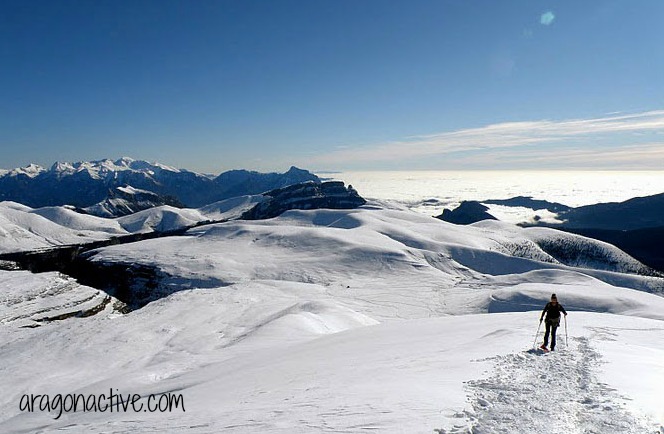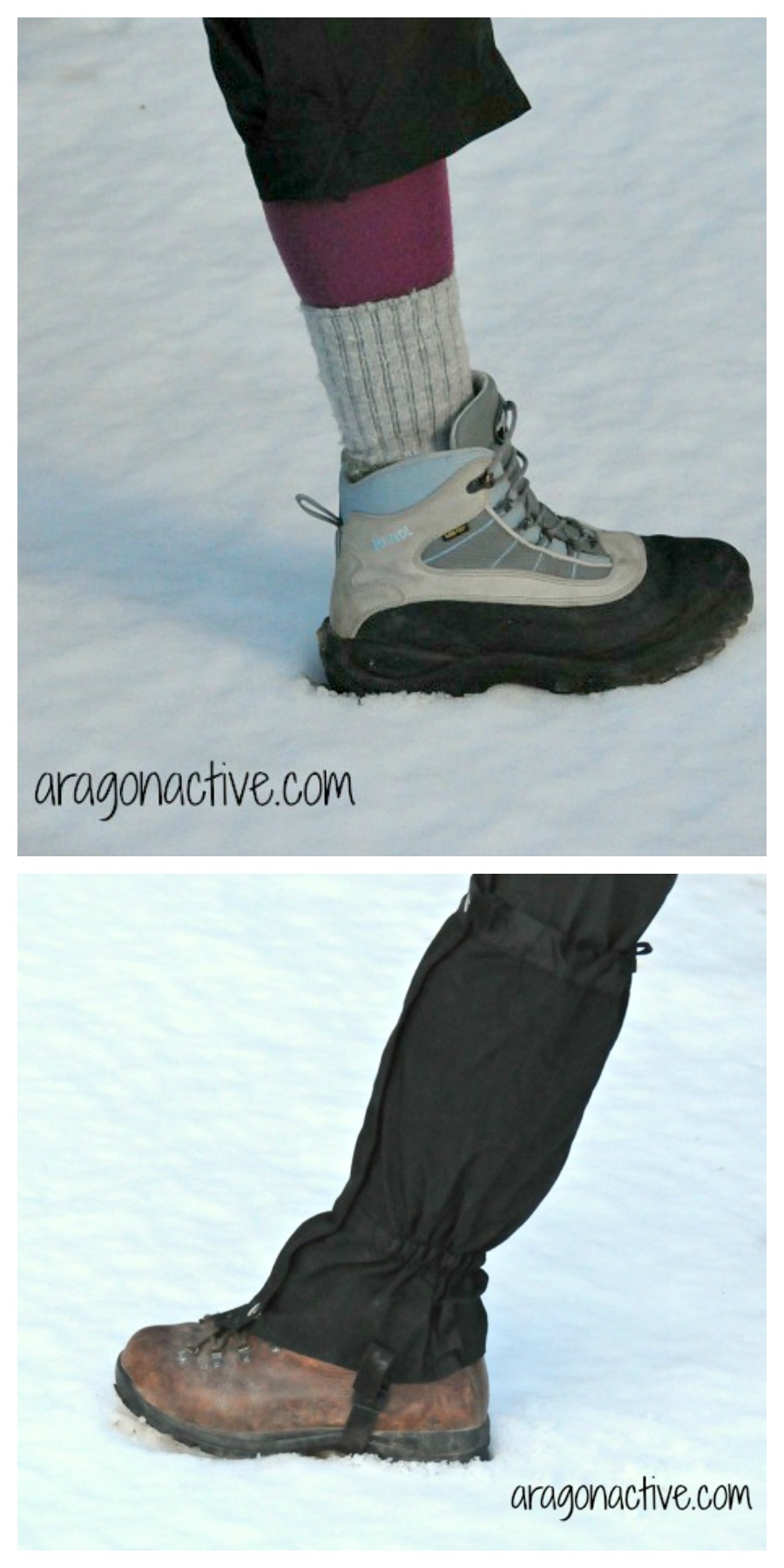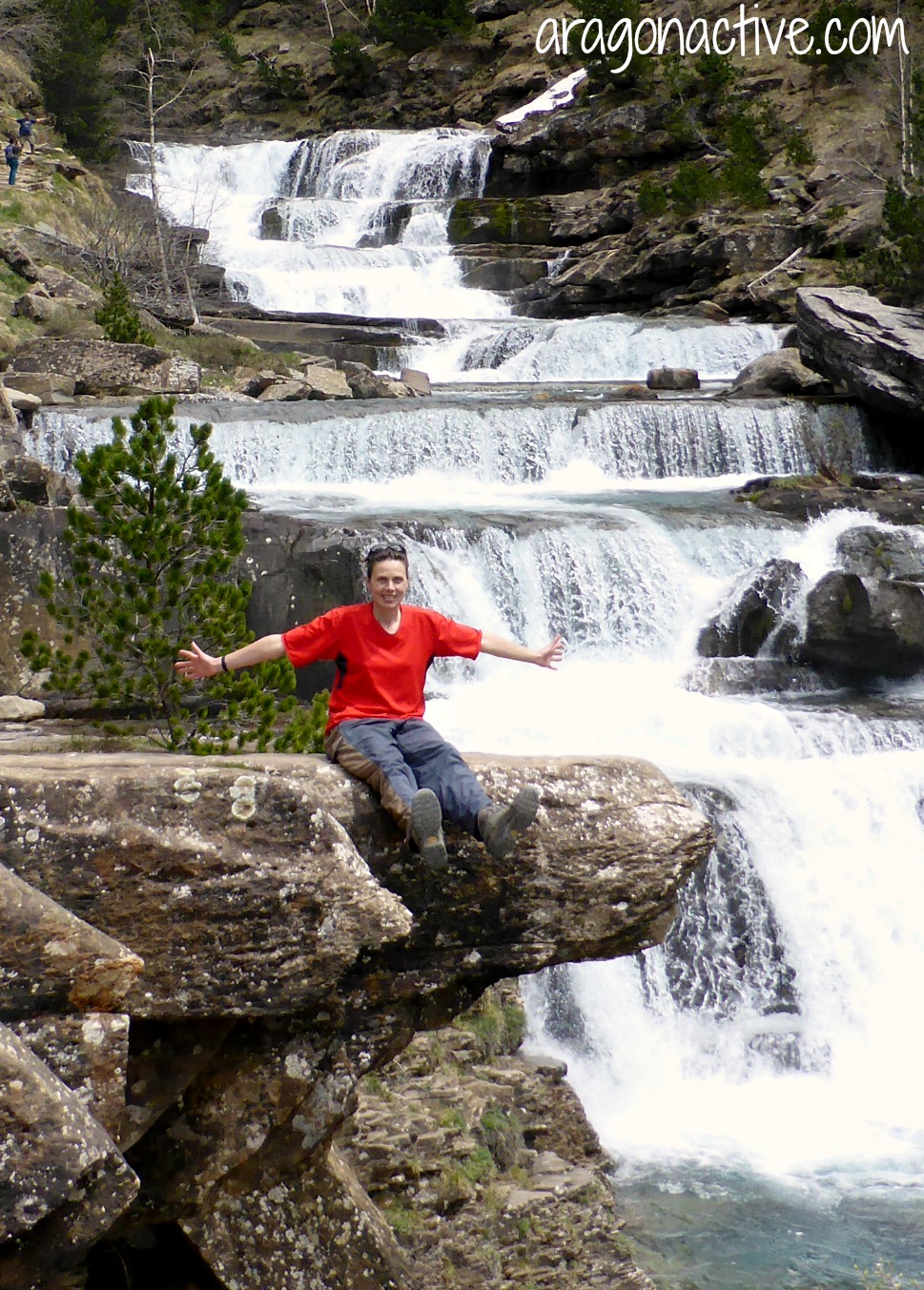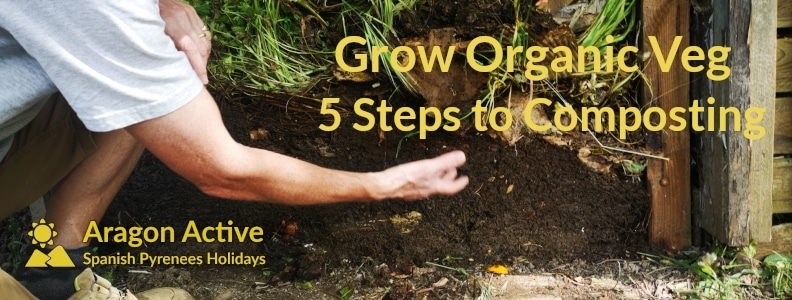What to Wear Snowshoeing

Introduction
Lucy Woollons is co-founder of Aragon Active. A husband and wife team providing special interest holidays and activity holidays for small groups in the Spanish Pyrenees. A keen snowshoe walker, Lucy will share some of her top tips, starting with What to Wear on one of our Snowshoeing Holidays Pyrenees.
Snowshoeing offers many benefits, from escaping the crowds on the ski slopes to getting a fitness workout during the winter months. It is a winter sport that’s easy to do and is suitable for both children and adults, young and old. In fact, I was even snowshoeing when I was pregnant! If you enjoy walking and have an average level of fitness, you will love snowshoeing.
 Snowshoeing in and around the National Park of Ordesa, where Simon and I live, is very special.
Snowshoeing in and around the National Park of Ordesa, where Simon and I live, is very special.
The winter reveals the true geology of this amazing landscape and the snow beautifully highlights the folds and layers of the mountains. The contrast with clear blue skies is dramatic.
We often have to pinch ourselves, and it is only when we see vultures soaring overhead, that we’re reminded we are snowshoeing in the Spanish Pyrenees.
This is a Spain few people know, but one we would love to share with you on our Snowshoeing and Winter Walking Holiday.
Layer up and keep dry
Choosing what to wear snowshoeing is like any other winter sport. It’s important to wear clothes that are easy to move in, but keep you dry and at the right temperature. Layers are the key.
Although you need to insulate your body from the cold, it is amazing how warm you can get, particularly walking uphill and in the sunshine. You will therefore need to take layers off and on, to regulate your body temperature.
As with walking, the last thing you want to do is overheat, as this will result in excessive sweating that will cool you down too much when you stop, slow down or are snowshoeing in the shade.
Like other winter sports, when choosing what to wear snowshoeing, wicking breathable materials are best. Avoid cotton as it will only chill the body if it gets damp with sweat. Wool, however, is a natural wicking fibre (it certainly works well on the local sheep here in the winter!) as well as a great thermal insulator, and is great in socks.
Remember, the aim is to stay dry on the inside as well as the outside.
Here is our recommended list of what to wear snowshoeing:

On Your Feet
• Socks: Wearing socks that suit you and the conditions are vital for enjoying snowshoeing. Wool or synthetic socks are the best to keep feet warm and dry. If like me, you naturally suffer from cold feet try Bridgedale WoolFusion® Summit Socks. There is a whole world of socks out there to choose from, all depending on your needs and of course, your budget.
• Boots: For recreational snowshoeing, what I would call “normal snowshoeing,” sturdy waterproof boots with ankle support are essential.
Specific winter hiking boots are ideal. They tend to have rubber uppers and thicker rubber soles, and normally have a thicker lining for added insulation.
If you don’t want to splash out on winter boots, then a decent pair of year round hiking boots can work in conjunction with gaiters. Again, ensure they are waterproof (waxed if leather) and have a high enough ankle to stop the snow creeping in.
• Gaiters: Gaiters are invaluable for stopping the snow from finding its way into your socks. Particularly when going through deep snow, or when wearing standard hiking boots.
Gaiters are normally specified as “Mens” and “Womans,” (a bit narrower ) so double check when you buy to. It is also a good idea to try them with your boots to make sure they fit on properly.
Legs and Torso
• Base layer:Synthetic or soft wool wicking thermal top and leggings.
• Mid insulating layer: Polyester fleeces are ideal as they even retain heat when wet and are breathable . Take 2 thickness depending on the weather – the thinner one can pack up easily as a spare in the daypack. Zipped fleeces are an advantage for quickly adjusting the heat.
• Outer layer: A waterproof, breathable jacket and trousers provide a good windproof layer as well as waterproofing. I just use normal lightweight breathable waterproof trousers but you can buy specific snowshoeing trousers which have an elasticated lining at the ankles (like ski trousers) and built-in gaiters to hook directly onto your boots.

Lucy modelling the head gear!
Head and Hands
• Hat – Woollen or synthetic. A peaked hat gives added protection from the sun.
• Buff – As extra insulation round the neck or head.
• Sunglasses and sunscreen – It may be winter but the UV rays are especially intense when reflected off the snow.
• Lip Salve -The cold mountain air is particularly drying on the lips.
• Gloves are essential. Ideally waterproof. It is always a good idea to pack an extra pair in the daysack, either to layer up if very cold or as a dry spare. Glove liners work well and are easy to wash, thus avoiding smelly waterproof gloves!
 OK. You’re ready!
OK. You’re ready!
You have made your choices of what to wear snowshoeing, and now it is time to get out and play.
Have fun snowshoeing, and maybe I will see you on one of our Snowshoeing Holidays Pyrenees.
Lucy Woollons


